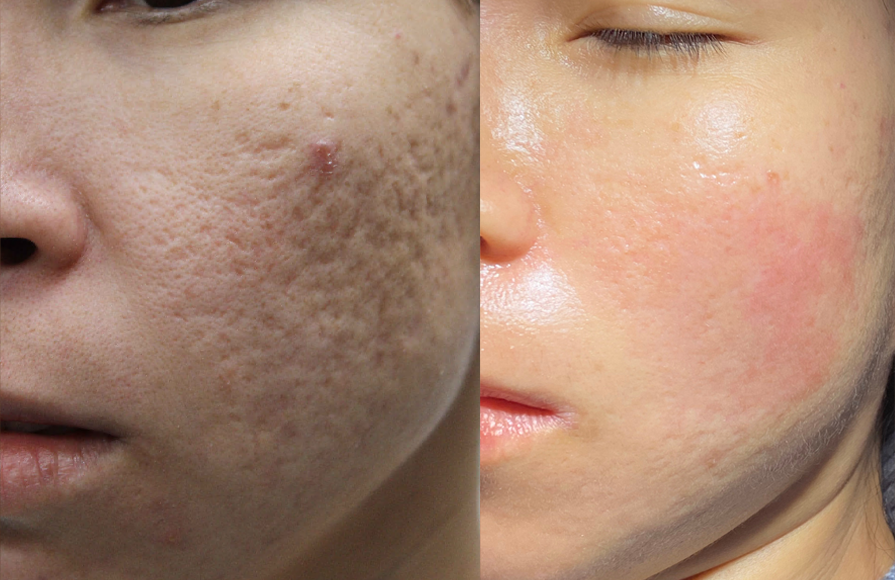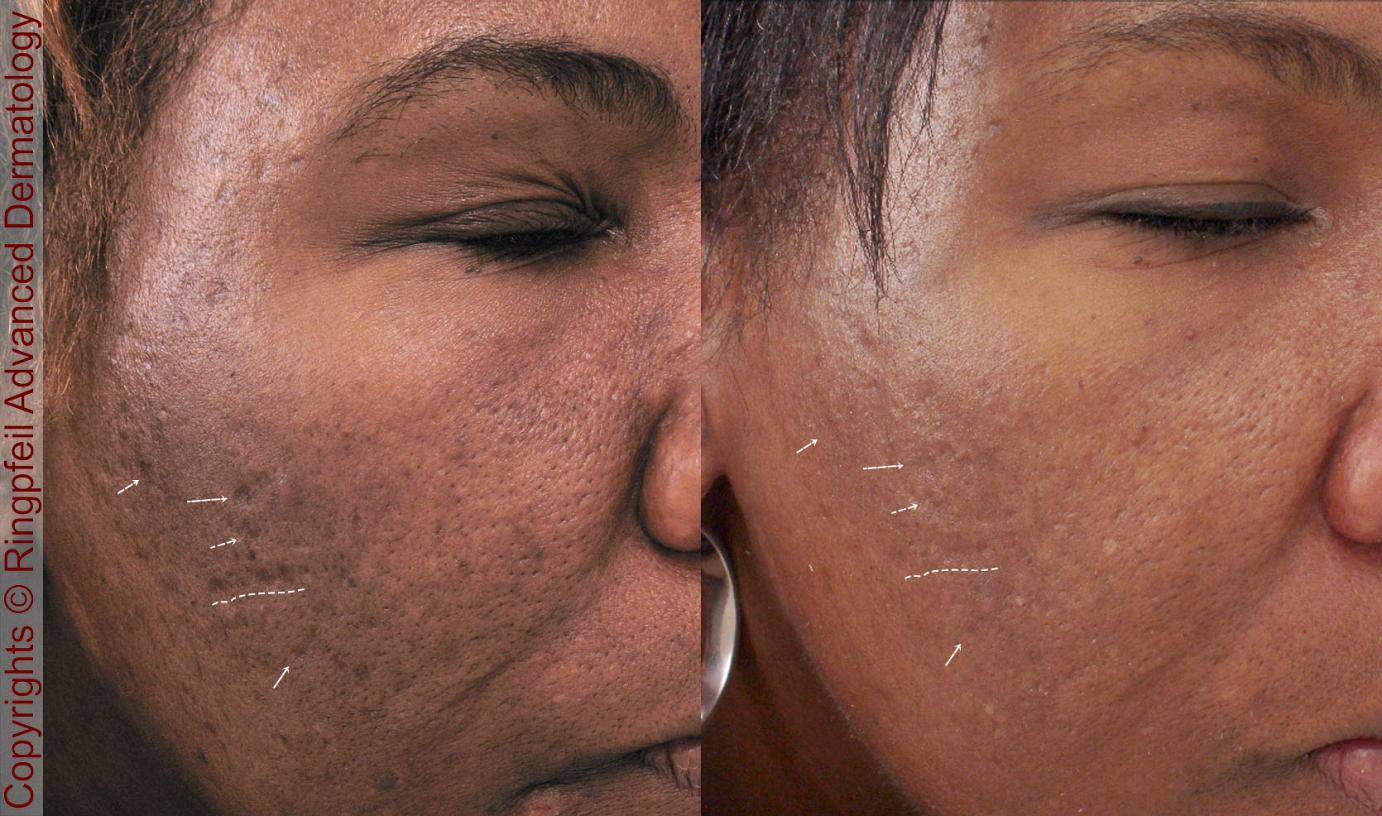Targeted Acne and Acne Scars Treatment: Recover Your Clear Skin
Targeted Acne and Acne Scars Treatment: Recover Your Clear Skin
Blog Article
Discovering Skin Problem: Treating and determining Acne Scars for Healthier Skin
Acne scars stand for a substantial problem for individuals seeking to maintain healthy and balanced skin, as they can influence both look and self-confidence. Understanding the different kinds of scars, from atrophic to hypertrophic, is important for figuring out suitable therapy options.
Understanding Acne Marks
Comprehending acne scars is essential for anyone who has experienced serious acne, as these marks can have an enduring effect on both physical appearance and mental wellness. Acne scars create when the skin goes through inflammatory responses throughout active acne sores. The intensity of scarring is frequently affected by elements such as the type of acne, its duration, and private skin attributes.
The body's all-natural recovery process can result in either atrophic marks, which appear as depressions in the skin, or hypertrophic marks, which are increased and arise from overproduction of collagen. Additionally, the psychological toll of acne scars need to not be undervalued; many individuals report sensations of embarrassment, anxiety, and decreased self-confidence. This emotional worry can influence social interactions and overall lifestyle.
Attending to acne scars needs an extensive understanding of their development and impact. Understanding of the potential for lasting effects linked with untreated marks can encourage individuals to look for proper therapies. Early treatment and effective administration approaches can substantially boost skin look and boost mental resilience, stressing the value of understanding the complexities surrounding acne scars.
Kinds Of Acne Scars
Acne scars can be classified right into unique kinds, each displaying special attributes and calling for certain treatment approaches. The key kinds of acne marks consist of atrophic, hypertrophic, and keloid scars.

Hypertrophic scars, in contrast, are increased above the skin degree and are the outcome of excessive collagen manufacturing during the healing process. They generally stay within the boundaries of the initial acne lesion. Keloid marks are similar however prolong beyond the initial injury site, developing bigger, elevated locations that can be unpleasant or scratchy.
Recognizing these kinds of scars is crucial for selecting appropriate treatment options. Various scars may react far better to specific treatments, such as laser therapies, fillers, or medical interventions, highlighting the importance of a tailored technique to acne scar administration.
Identifying Your Scars
When reviewing the look of your skin, it is vital to accurately determine the sort of marks present, as this will notify the most reliable therapy strategy. Acne scars usually come under 2 categories: hypertrophic and atrophic scars. Atrophic scars, which are one of the most common, look like clinical depressions or impressions on the skin. These can better be classified right into ice-pick scars, boxcar marks, and rolling scars, each exhibiting distinctive qualities and requiring different techniques for assessment.
Hypertrophic scars, on the various other hand, are raised and happen because of extreme collagen manufacturing throughout the healing procedure. Identifying the certain attributes of your scars-- such as structure, depth, and size-- is vital for correct recognition. Furthermore, think about the circulation of scars throughout your skin, as this can indicate the seriousness and duration of the acne problem.
Engaging with a skin specialist can offer beneficial insights into the nature of your scars, helping in the differentiation in between different kinds. A complete understanding of your scars will inevitably bring about a more customized and efficient therapy plan, ensuring a more clear and healthier skin.
Therapy Alternatives Offered
Determining the specific type of acne scars existing on your skin lays the groundwork for exploring efficient therapy options. Usual kinds of acne marks consist of atrophic (depressed), hypertrophic (raised), and post-inflammatory erythema.
For atrophic marks, choices such as chemical peels, microneedling, and laser resurfacing are extensively utilized. Chemical peels off utilize acids to get rid of the outer layer of skin, advertising new cell growth. Microneedling includes small needles that develop micro-injuries, stimulating collagen manufacturing. Laser resurfacing targets damaged skin cells, boosting texture and tone.
Hypertrophic marks can be treated with corticosteroid injections to squash the mark or laser treatment to minimize redness and boost look. acne treatment for sensitive skin. Silicone gel sheets and pressure dressings might additionally help in handling elevated marks
Additionally, facial fillers can briefly fill out anxieties from atrophic scars, while medical excision might be appropriate for severe situations. Each therapy alternative has its factors to consider and advantages, making it necessary to speak with a skin doctor. They can supply tailored referrals based upon the type and seriousness of your marks, in addition to your skin kind and general health and wellness.
Tips for Avoidance
Effective avoidance strategies can dramatically decrease the likelihood of developing acne marks. The very first step is to maintain a regular skincare routine that consists of gentle cleaning, exfoliation, and moisturizing. Utilizing non-comedogenic items helps avoid stopped up pores, which can intensify acne. Furthermore, including topical therapies containing salicylic acid or benzoyl peroxide can efficiently manage breakouts and decrease swelling.
Avoiding need to choose or stand out acne lesions is critical, as this can result in deeper skin damage and boost the danger of scarring. Instead, take into consideration using a cool compress or over-the-counter treatments to decrease swelling and inflammation.
Sunlight protection is one more vital element of prevention; ultraviolet (UV) rays can darken marks and impede the healing process. Using a broad-spectrum sun block with at the very least SPF 30 daily can protect the skin and advertise even healing.
Lastly, preserving a well balanced diet plan try this website rich in minerals, vitamins, and antioxidants sustains skin health and recovery. Staying hydrated and taking care of stress levels can additionally play a significant role in reducing acne flare-ups. By implementing these methods, individuals can dramatically lessen their chances of creating acne scars.

Conclusion
In final thought, understanding and determining acne scars is necessary for effective treatment and accomplishing healthier skin. Various types of acne marks, including hypertrophic and atrophic marks, necessitate certain treatments tailored to individual needs. Treatment choices range from chemical peels and microneedling to corticosteroid injections, emphasizing the relevance of speaking with a dermatologist. Additionally, taking on a mild skin care routine and shielding the skin from UV exposure can substantially add to the avoidance of additional scarring and total skin health.
The body's natural healing procedure can result in either atrophic marks, which show up as clinical depressions in the skin, or hypertrophic marks, which are elevated and result from overflow of collagen. They are this page more separated into 3 subtypes: ice pick marks, boxcar scars, and rolling marks. Acne scars usually fall into two categories: atrophic and hypertrophic marks. These can even more be categorized into ice-pick marks, boxcar marks, and rolling marks, each showing distinctive features and needing various approaches for assessment.
Numerous types of acne marks, including atrophic and hypertrophic marks, necessitate details treatments tailored to browse around this site specific demands.
Report this page